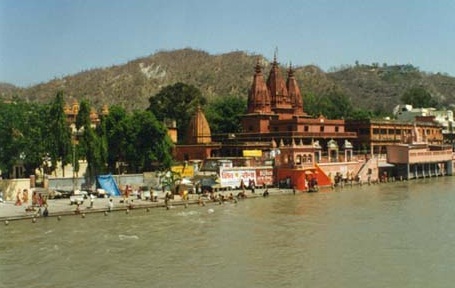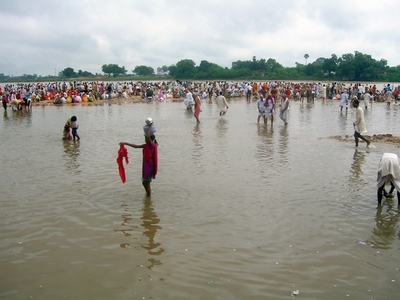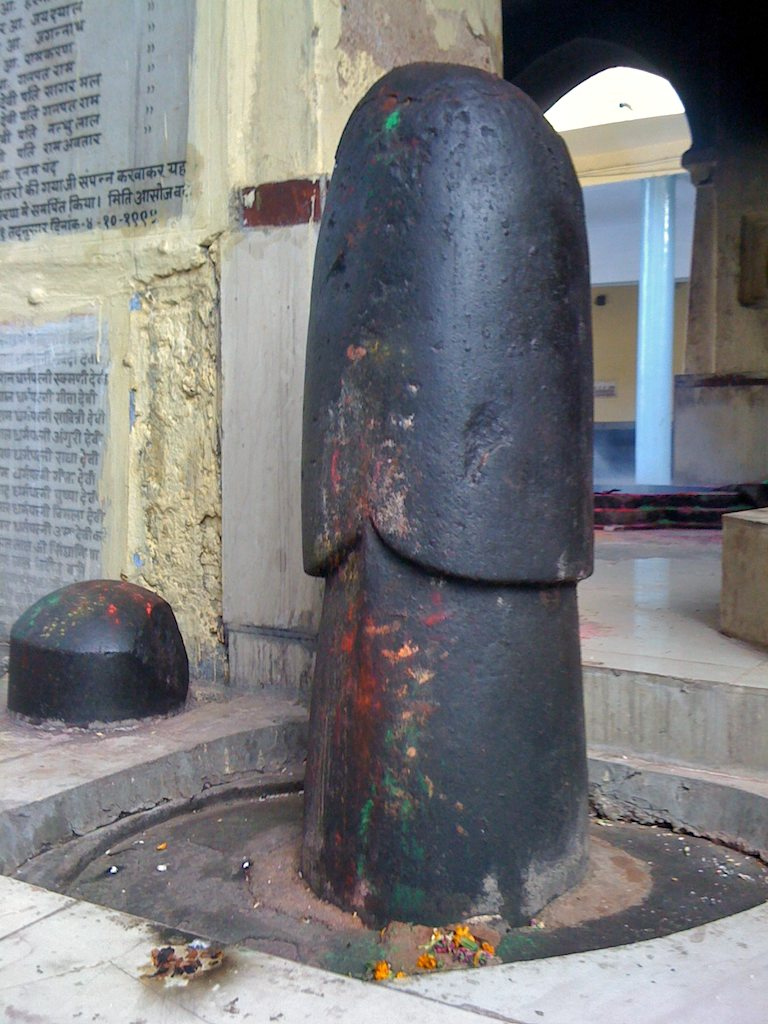Gaya is a world famous place and has many important places from the aspects of Hinduism confined in its distances. Some of the holy sites at Gaya include:
where there is a 40 cm long footprint of Lord Vishnu. The temple was established along the Falgu River and is the place where lord Vishnu subdued Gayasur by placing his foot on his chest. These big footprints of lord Vishnu can be seen inside the temple and are imprinted in hard rock. Being located at centre part of Gaya, the temple has Gold Flag and Gold Dome at the Top.
Mangla Gauri:
Mangla Gauri shrine is has two rounded stones that symbolize breasts of mythological Sati (first wife of Lord Shiva). An old and sacred temple, it is located in Chand Chaura area of Gaya town and is visited by hundreds of devotees.
Falgu River:
The Pind Dan starts from Falgu River. It has an interesting story that when Lord Ram came to Gaya with Sita for Pind Daan, Sita cursed Falgu River due to disobedience on its part and due to the curse Falgu River lost its water and was replaced by vast stretch of sand dunes. However, water can found all round the year by digging in its dry sandy riverbed and thus is also called “Antah Saliya”.
Akshay Bat:
This is the last important place where pinda dan is done. It has been given a boon by Sita that it cannot die or be destroyed. As per Ved Puran, Lord Krishna will stay under its shadow when whole world drowns in water. Those who do their Pind Daan here, their ancestors go straight to Dev Lok.
Preth Shila Hill:
It is around 8-kms from Gaya and means hill of ghosts. With the place being sacred to Yama, Hindu god of hell, the place is one of sacred places of pilgrimage. All visitors can also see a small temple on top of hill dedicated to Yama. At the foothill are three tanks called Sati, Nigra and Sukha with fourth tank 'Ramkund' present on summit near temple of Yama where it is said that Lord Ram took bath. It is believed that whoever takes bath in this tank and does shradha and Pind Daan here is ridden from his all sins.
Ramshila Hill:
The hill is situated on north of Gaya town and is around 715-ft high. On the top there is old temple called Rameshwara or Mahadev temple where there is a pavilion where Pindas can be offered.
Brahmayoni Hill:
It’s the highest hill in Gaya and contains small temple at top of Lord Brahma. There is small natural fissure in rocks at the hill top through which one person can just manage to crawl. It is believed that whoever does the crawling is saved from the process of rebirth.
Importance of Gaya for Pind Daan (Shradh, Shraadh)
As per the narration Gaya Mahatam in Vayupuran, at the time when mankind was being created, Lord Brahma created demon named Gayasur who did deep meditation at Kolahal mountain. Pleased with his devotion, Lord Vishnu asked him to seek one blessing. Gayasur desired that whoever comes in touch with him (angel or demon, insect, sinner, saint or sage, evil spirit) should find salvation and thus purified of all sins can then proceed to vaikunth (abode of Lord Vishnu). The Pind Daan done at Gaya is also considered a personal way to make offerings on foot prints of Lord Vishnu, thus ensuring all departed souls of our ancestors rest in peace permanently.




Gaya – As a Last Homage Point
A place known for its spirituality, Gaya also has historical importance for paying last homage to our ancestors who are no longer with us in physical sense. An important place for conducting last ceremonies, Ramshila is one of the places in Gaya where these ceremonies are conducted.
As per our ancient text, it was Lord Brahma who first performed Pind Daan ceremony at Gaya and since then this tradition has been continuing with Pind Daan offered during dark fortnight of Ashvin being of special significance.
- Home
- Obituary Services
- Our Obituary Service Advantage
- Obituary Remembrance Page
- Shraddha (Shradh, Shraadh)/Pind Daan
- Beliefs of Hindu Religion
- Relation Between Souls, Pinds, Rebirth & Attaining Moksha
- Importance of Pind Daan & Blessings of Ancestors
- Unnatural Deaths & Benefits from Pind Daan
- Pitru Dosh & Its Remedy
- Is Doing Pind Daan Beneficial without Self Presence of Related Family Members
- Gaya – As a Last Homage Point
- Other Important Last Homage Points
- Hemkund Sahib - Sahaj Paath Bhog/Ardas
Historical Importance
As the only process of attaining mukti from this cycle of birth and death, Pind Daan done at Gaya helps in freeing the atma (spirit) of the dead to become free from this circle of rebirth. The religious following of this practice can be seen from Ramayana, a religious book of the Hindus where it is stated that Lord Rama paid his last respects and homage to the spirit of King Dashratha at this very place.
Since then, Gaya has become a world famous place for performing the last rites of the dead and departed in form of Pind Daan or Shradh. As per the belief of Hindus, this practice is being followed as for:
- Helping our dead ancestors attain salvation
- Ward off restless spirits that affect family members of the dead due to improperly done/half done last rites